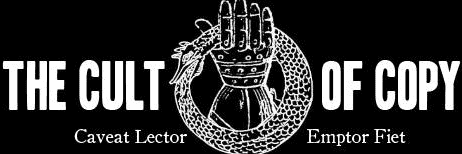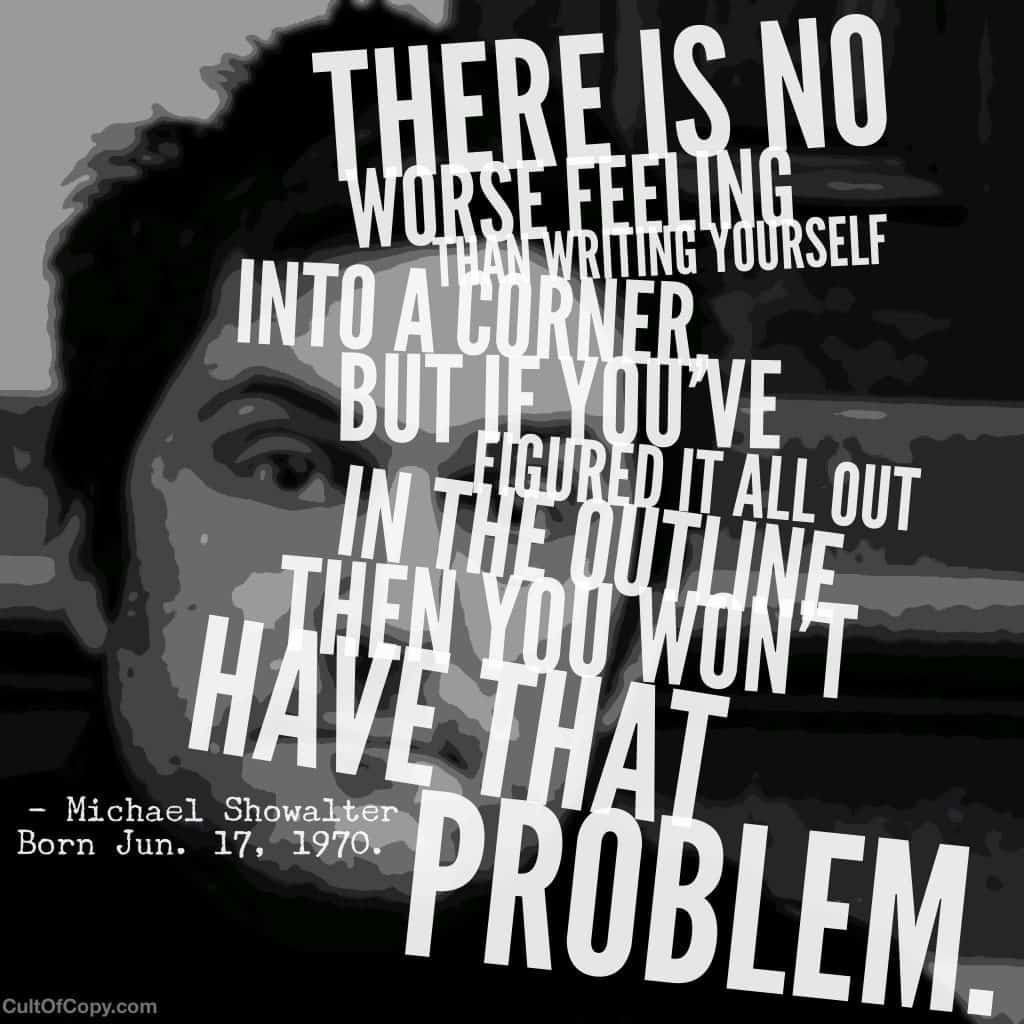“I am a big proponent of writing a great outline. That way you can avoid hitting a roadblock. There is no worse feeling than writing yourself into a corner but if you've figured it all out in the outline then you won't have that problem.” – Michael Showalter, Born Jun. 17, 1970.
Showalter is talking about comedy screenplays, because that's what he writes.
But we write for persuasion and influence. A comedy movie has the goal of making you laugh. That is the “call to action” that a comedian demands you to fulfill. Laugh! Ha HA!
And for us, usually the goal is to get out your wallet and snatch up that credit card and type in them digits.
But regardless of your goal, when your writing HAS a goal, you SHOULD be working from an outline. Outlines are basically maps for action-oriented writing of any kind.
Start with the end in mind.
And you know where your prospect's beginning is – that's right now.
So between where they are now, and where you want them to end up, what does the map of that territory look like?
That is your outline, your blueprint, your roadmap.
Oh shit, it's kind of like having a TEMPLATE! Like the ones I make and sell and recommend every persuasive writer create for themselves.
But when you have an outline, you know what all the major steps are, and you're just filling them in.
The lines are drawn before you start, and you can creatively color inside them. And you will end up with something unique, but is still definitely a picture of a specific thing.
And this gives you a distinct advantage over everyone writing persuasive copy who is trying to be a creative artist, plowing through a piece, in order, from beginning to end, without the skeleton that an outline provides.
They hit walls. They get stuck in corners.
You just have to go from point to point with smoothness and efficiency. You have the big picture.
So you can write with swiftness and confidence in what you're trying to get the reader to do, and how you're going to get them from here to there.
Agree? Or do you have to reinvent new and ever more elaborate wheels every time you write? Do you create a structure first and then flesh it out? Or do you just freestyle it Frankenstein-like?

